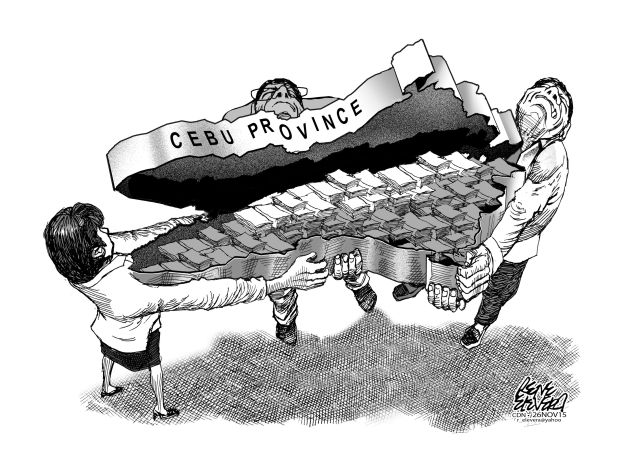
Leave it to a bureaucrat to give a dispassionate view of Cebu province’s wealth as a landlord.
“The bulk of the province’s assets which increased to more than P20 billion was caused by the reappraisal of our land holdings and other real properties,” said Capitol accountant Marieto Ypil.
Ypil mentioned a key transaction that helped propel the province’s assets to what they are now: the Capitol auctioned off the 46-hectare Club Filipino golf course, selling it to Ayala Land which developed it into the Cebu Business Park.
The old Lahug airport, once owned by the province, was also converted into the IT Park which is now home to business process outsourcing companies in an industry that now hires 100,000 workers in Cebu.
The public bidding took place in 1989 during the term of former Cebu governor Emilio “Lito” Osmeña. With provincial lots as security, he engineered a P1-billion bond flotation that raised cash to pave provincial roads, fix bridges, install telephones and lighting in each town and.
The real estate developer-haciendero is acknowledged as the real architect of the “Ceboom” economy.
The happy news that the 2014 COA Annual Financial Report recorded Cebu province as number 1 in assets and equity among 80 provinces nationwide was a welcome break from the premature bickering of candidates in the local scene.
It didn’t take long for the political noise to take over. Former governor Gwendolyn Garcia couldn’t let the incumbent Gov. Hilario Davide III take credit for Cebu’s wealth. She said he merely “inherited” it from her administration.
What she didn’t say was that the “inheritance” was land that has always been titled in the name of the Province of Cebu.
Even if Davide doesn’t build a single edifice, the balance sheet would show assets with an impressive value of over P20 billion. Since most of the real estate is located in Metro Cebu, the value of urban land goes up each year, as an annual valuation shows. Accountants certify to that.
Cebu province has always been land-rich.
The irony is that its current 4 million population, most of them in rural communities, remain poor in farming and fishing villages that get the least attention and budget share of the government.
The challenge is how to convert non-liquid assets into stuff that makes a difference.
What moves the needle is transforming a piece of land from idle grass and mud into a vibrant economic zone. That’s what happened when a 46-hectare golf course used by privileged families in Cebu who paid peanuts to the provincial government for decades was put on the market and developed into a commercial hub that energized the core of Cebu City. That’s how an underused Lahug airport became the BPO capital of Cebu.
Garcia, in her 9-year term, built a Cebu International Convention Center, whose dilapidated state is still in limbo, almost built a Ciudad in Banilad, acquired 25 more hectares of mostly underwater land in the Balili Estate in Naga, and jumpstarted a BPO complex near the IT Park that has yet to start full operation. Davide is ending his term with plans to construct a 12-story building for offices and a disaster management headquarters. Will voters in the province appreciate this use of Cebu’s land wealth?
Let’s see in 2016.